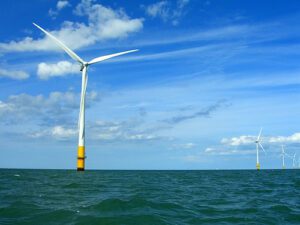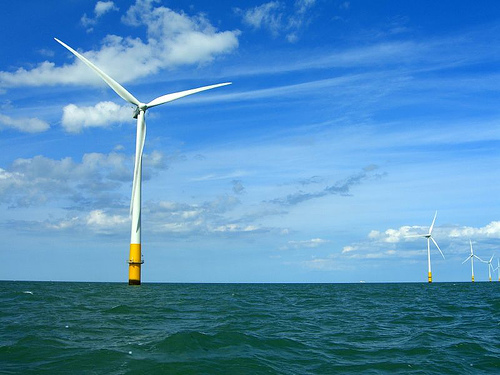
A local ‘Businessperson of the Year’ has said a staggering 30,000 jobs could be created in Merseyside from ‘green energy’.
John Syvret, chief executive of Cammell Laird and this year’s winner of Liverpool Post Regional Business Awards, said more investment in nuclear and wind energy projects could bring 30,000 manufacturing and engineering jobs to Merseyside.
The bold statement came from the man at the head of Cammell Laird shipyard’s renaissance – a company which is active in the energy sector – at a round-table debate about skills and training in the green energy sector.
The panel, which included Howard Sloane, head of HR at Peel Ports, and Jerry Spencer, entrepreneurship manager at Liverpool Vision, said that it was vital to raise both skills and awareness of the green energy sector among young people.
Mr Spencer told JMU Journalism: “Mr Syvret believes there are missed opportunities around offshore wind, which is largely occasioned by mistaken government and local government decision-making and policy on supporting green business and developing the green economy.”
At the discussion, Mr Syvret claimed that if the government gave the go-ahead for more nuclear power stations the economic benefits for the city region could be huge.
He called for “political will” to strengthen the UK’s manufacturing sector.
Speaking at the event, he said: “If we really want to help our local communities then we need support. We are not asking for financial help – just the political will.
“We could create 30,000 jobs over the next couple of decades in the green energy sector. The UK should have started building new nuclear power stations 10 years ago.
“We need to be manufacturing ourselves but there needs to be political will.”
The Cammell Laird boss also hit out at the UK’s lack of offshore developments, adding: “The first phase of the offshore programme has pretty much bypassed the UK.
“There is a massive opportunity in offshore energy. We have the ability to quadruple in size if we were able to capture more of that market.”
Presently, components of wind turbines are manufactured in Europe and elsewhere and shipped to the UK to be assembled.

